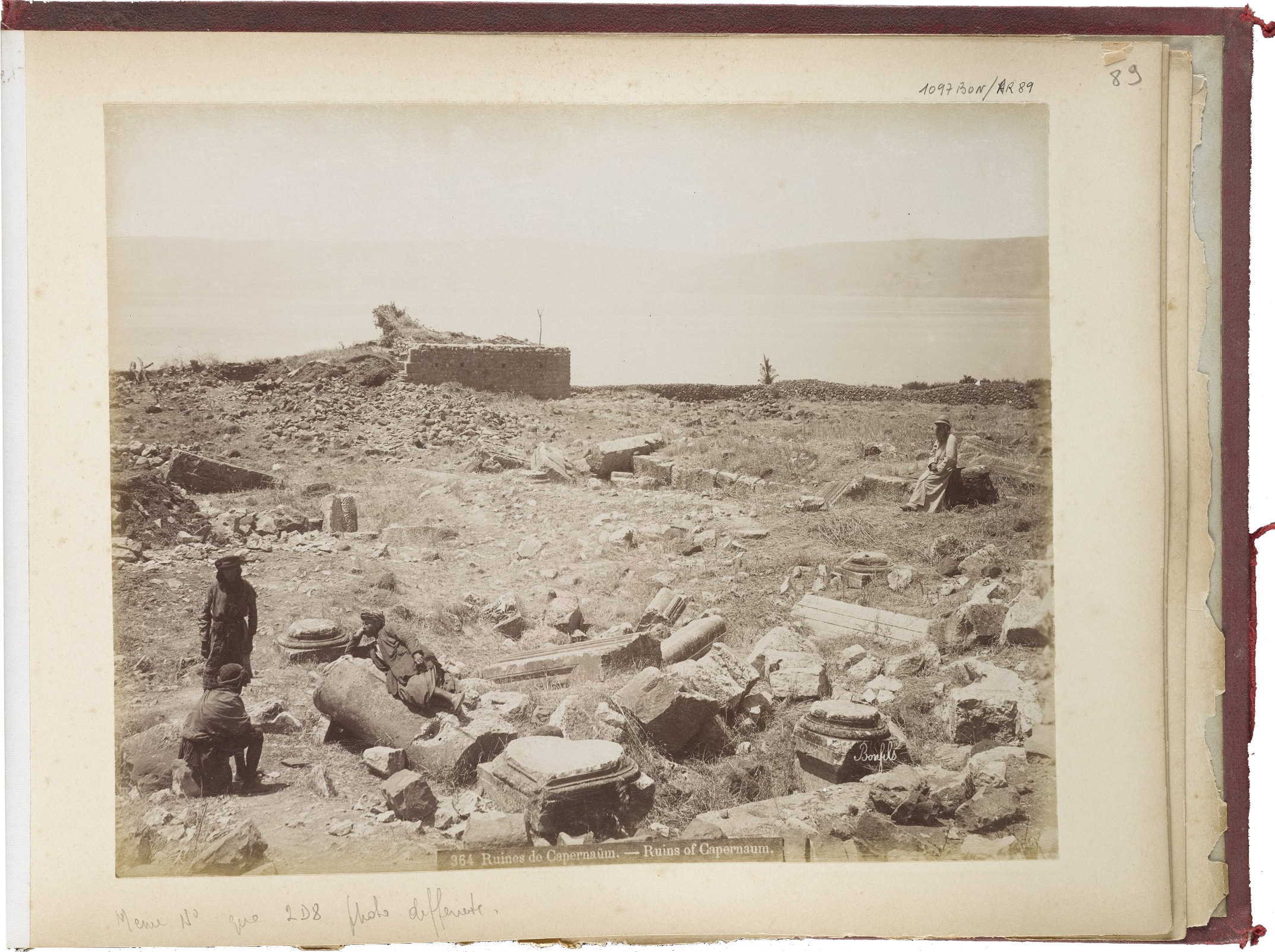This historical photograph from the Lenkin Family Collection captures remnants of the ancient town of Capernaum (Kefar Naḥum in Talmudic sources, Tanḥum in Medieval sources, and the modern Arabic site name of Talḥum) prior to its excavation and transformation into a Christian pilgrimage site. The image shows the Galilean landscape of 19th century Palestine, riddled with ruins on and below the surface and inviting curiosity about the people who once lived, worked, and died there. Probing the palimpsests of the past, archaeologists excavating at Capernaum have subsequently revealed Roman/Byzantine remains including a richly decorated synagogue built from imported white limestone blocks (visible in the foreground of the image), as well as a modest Jewish fishing village with humble houses constructed from local basalt fieldstones (Tzaferis 1993).
Capernaum and other excavated settlements provide tangible windows into many aspects of “household Judaism” (Berlin 2005) and domestic life in ancient Palestine. Ancient architecture, art, and material culture reveal how Jewish homes in antiquity were spaces for creating and constraining community through access and movement, labor and maintenance practices, ritual observance, foodways, family dynamics, and gender relationships (Meyers 2008)
